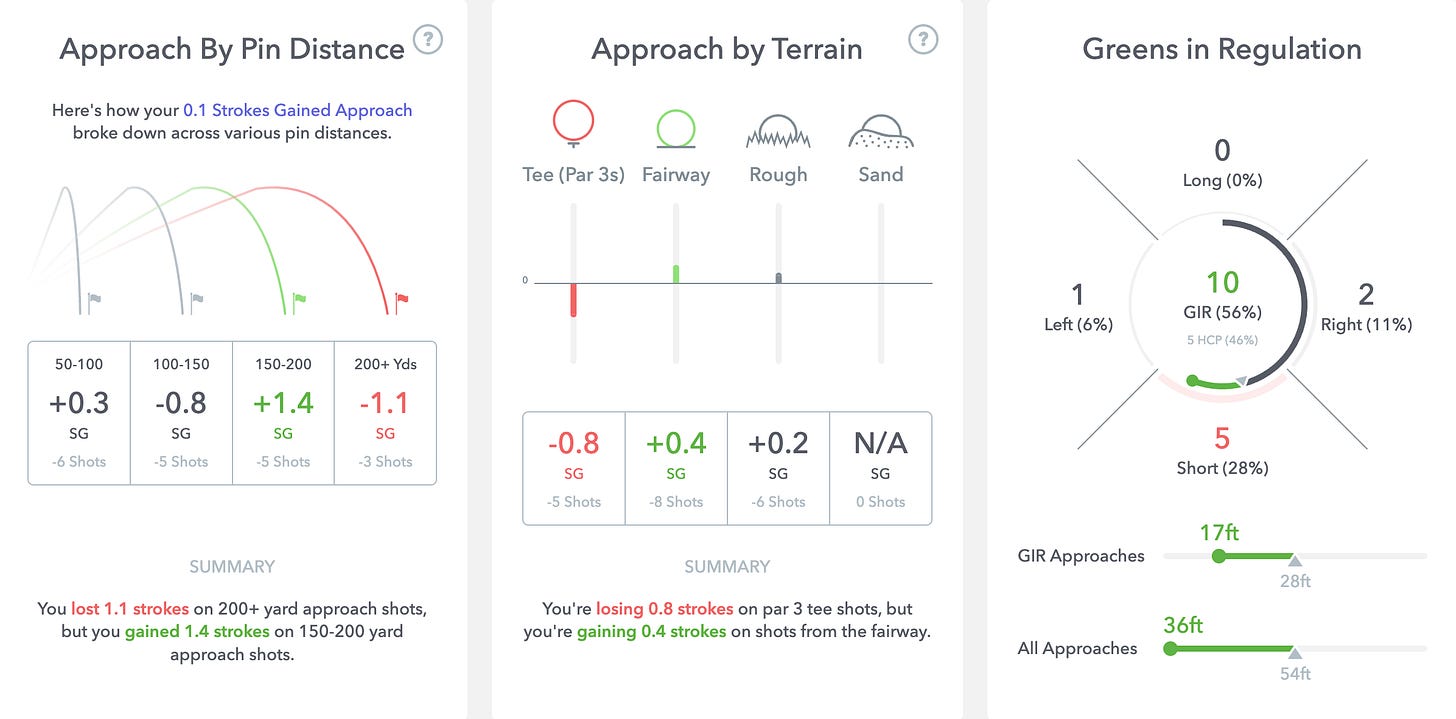It’s been an interesting year, to say the least. While I’ve mentioned some of my struggles to play golf while working full-time, being a husband and a dad, and pursuing my MBA, I’ve really had life get even busier over the last 4-5 months.
I work as an executive at a non-profit that helps kids from all over the world who struggle with poverty, brokenness, homelessness, hunger, abuse, and neglect. It’s an incredibly rewarding job that I feel called to and I love. I’m blessed to do it.
Because I oversee all the marketing for the organization in addition to my leadership responsibilities, and nearly all of our marketing can be managed entirely online thanks to technology, I’ve got pretty good job flexibility. It has historically allowed me to play a ton of early morning solo rounds before my work day begins at the course in my neighborhood. Out by 6:15A, back at my desk by 8:30A at the latest.
Unfortunately, all of that changed about 4.5 months ago when the war in Ukraine began.
Our organization began in Ukraine 17 years ago, and we invest nearly a quarter of our budget in Ukraine today. Our response to the war in Ukraine was immediate and has been constant and far-reaching as we’ve helped tens of thousands of refugees both in Ukraine and the surrounding countries. Ok, sorry…the non-profit marketer is coming out….I am tellin you all of that information to tell ya that we’ve had daily 8AM debriefs from the teams on the ground in Ukraine and Poland 5 days a week for the last 4 months. These have been critical to setting up infrastructure, identifying obstacles, building strategies to overcome those obstacles, and ultimately delivering the aid and support needed to people impacted by the war.
8 AM meetings, as far as this blog is concerned, have been an absolute death sentence for the number of rounds of golf I’ve been able to play. I can count on one hand the number of early morning rounds I’ve played over the last 4.5 months. I used to average 2 a week! So slight difference.
Add to that the fact that I’ve had a couple really difficult and time-consuming courses for my MBA and it feels like life revolves a lot more around this computer than it does around the course these days.
While I haven’t been playing as much, I still feel like I’ve been improving fairly significantly. I think at times, being off the course and reading, talking with others, watching golf, consuming golf content, etc. can really be helpful if we’re able to not just consume, but also understand and implement some of the tactics and strategies into our on-course games.
As of this morning my index is 6.7 officially. I want to get out and play some other courses to really test my game. Playin 95% home games feels like cheating to me. I know it’s not, but it just feels that way. I have played other course twice and posts 79/80 respectively, so I’m playing to my handicap roughly. Most of the scores that count for my index start with a 7 for the first time in my life, which is kinda cool. Really want to play more often and see what I can do…
At any rate, while I’ve had this slow season, here are a couple thoughts/themes that I’ve spent a lot of time thinking about and learning about. Maybe they’ll be helpful to you as well!
1. Manage my expectations
This is a Lou Stagner special from Twitter. If you don’t follow Lou, you really should. He recently joined the Arccos Golf Team and is a total data nerd. He shares fascinating data with some great visualizations to help put the game of golf into perspective.

This has really freed me up to play golf without beating myself up over shots that in my mind may be really poor, because in reality, in the larger context of hundreds and thousands of golf shots, I’m likely much closer to the average than I think.
2. Use my head
I’ve heard plenty of people say through the years that golf is 80% mental, and while I don’t know if that specific number is accurate, I think so much of the game can be won or lost before ever stepping foot on the first tee.
By tracking my Strokes-Gained statistics, and understanding where my game is weak or where I tend to throw strokes away, it has really allowed me to plan and think through shots or scenarios I might encounter before I ever hit a single shot.
Strokes gained data makes it very clear where my score is coming from.
Where can I miss with the driver? Where can I miss with this par 3 shot? How can I continue to reinforce and strengthen my single shot shape?
Spending some time listening to Scott Fawcett talk about when to hit driver has been really helpful as well! Check this video out if you’re interested in better tee shot planning!
3. Accept who I am
Wanna talk about that “single shot shape” concept for a second. I’m not someone who has a lot of time to practice, or even if I do, when given the choice to play or practice, I’m pegging it every single time. I just love to play. I don’t hate to practice, but I love to play.
With that in mind, I’ve had to realize that I’m likely not going to be able to really undergo significant swing changes and build them into my game as muscle memory. I just don’t spend enough time on the range to rebuild my swing, and I’m someone who really probably could use a swing overhaul. I swing out to in as much as 11-12* at times, and play a pull cut with my long clubs. I’ve tried for years to change that path, and I’ll always continue to try and neutralize it a bit, but I’m embracing it. By knowing I’m going to hit a cut and the ball will always move left to right I’ve been able to eliminate some of the mindless clutter that I think about when I am standing on the tee.
Recent Trackman Driver Report….7 Degrees left….that’s fun!
By knowing where my shot will go when I hit it, and spending time before the round planning my tee shots, I’m able to come to the course, pick a target and send it, whether its driver, mini driver, fairway or utility iron, with confidence that I’m picking the right line and knowing its gonna be ok more often that not. I’m trying to stop playing fearful, defensive golf, and to simply play freely and enjoy the game.
4. Talk about golf A LOT.
One good thing about spending lots and lots of time on this computer every day between work and school is that I’m able to check in on twitter much more frequently. I LOVE talking golf. Tour golf, amateur golf, golf clubs, golf strategy, golf courses, golf apparel, etc. I’ve built a great network of friends and followers on twitter who I can engage in a lot of fun, challenging, encouraging golf talk. It’s been a great escape from the stresses of work and school, and allowed me to scratch the golf itch during a season of life when I’m just not able to get out and play as much as I’d like.
Hearing what other guys shoot, seeing the courses they play, listening to their strategies, swing thoughts, etc. has been really helpful for me.
Nobody has been more helpful and more engaging than Jon Sherman. Jon runs the Practical Golf website and hosts The Sweet Spot podcast with Adam Young, which is a deep pool of free information for golfers who want to improve their games. Most recently, Jon has written a book The Four Foundations of golf, which takes some really complex and involved concepts from the world of golf and golf improvement and breaks them down into really simple and easy-to-understand nuggets. Not only is Jon’s book great, but Jon writes ‘mini novels’ on twitter at least once a week with threads full of more absolute golf-junkie gold. These threads spur tons of conversations, new friendships/followers, and really help me learn and understand how to score and play the game of golf better.

5. When I find equipment that works, REALLY WORKS, stop chasing new clubs.
This is a tough one, because I’d be lying if I said my ‘most visited’ site wasn’t the GolfWRX Classifieds section. I’m always looking at clubs….sometimes I think I enjoy the buying/selling of clubs almost as much as I love playing….almost! But I’ve got a few clubs in my bag right now…my driver, mini driver, and irons, that are as good as any I’ve ever hit, and really fit my swing and my game. There will always be shiny new sticks to pursue, and I’m not perfect, but honestly, if I changed any of those 3 parts of my game right now, I’d really be doing myself a disservice.
I’m back and forth on twitter with lots of my #Golf twitter boys and so many of them, are always putting a new set of irons in the bag, new driver, new fairway wood, new putter, new wedges, etc. I’m NOT saying never change. I’m still auditioning a few pieces in my own bag. I’m saying once you find something that really fits you, don’t be so quick to look for solutions to bad rounds in another club or set of clubs. Be relentless in pursuing clubs that fit your game, and if you don’t currently have them in your bag, then keep searching and trying, but if you have some you love and that work for you, stop searching in that part of your bag. Familiarity with my irons and my driver, in particular, has really been a boost to my game and the consistency I’ve shown over the last few months.
I’ve never in my life hit irons that I get along with as well as my Srixon ZX5/ZX7 combo irons. They’re not leaving the bag any time soon!
I think that’s probably plenty for now. I’m dying to get back to golf writeups and sharing with you some of the technologies I’m trying, the apps, the tracking methods, the clubs I’m trying to find to lock into a certain spot in my bag, etc. I’m hopeful that will happen soon. I have 12 weeks left in this MBA program. I can see the light creeping up at the end of the tunnel. I’ve given about all I can give, so I’m hoping this last couple of months I can sort of put it in cruise control and wrap this thing up with around a 4.0 GPA. I’m proud of the work I’ve done, but I’m tired of it and ready to get back to more of this awesome game.
If you’re subscribed to this substack or you’re reading this because you came from twitter…thanks for doing so! I promise there’s some good content coming and hopefully even this longer form writing has been helpful or entertaining in some way.







